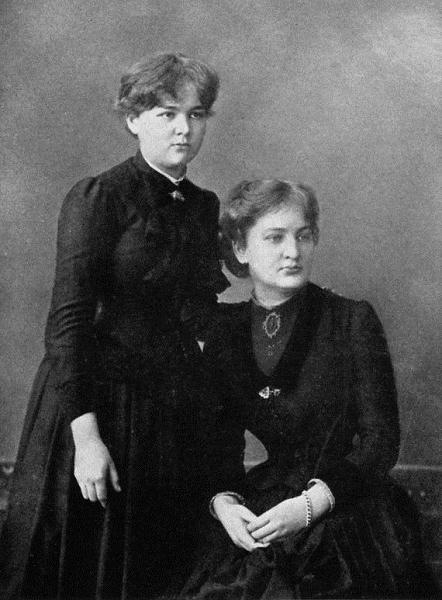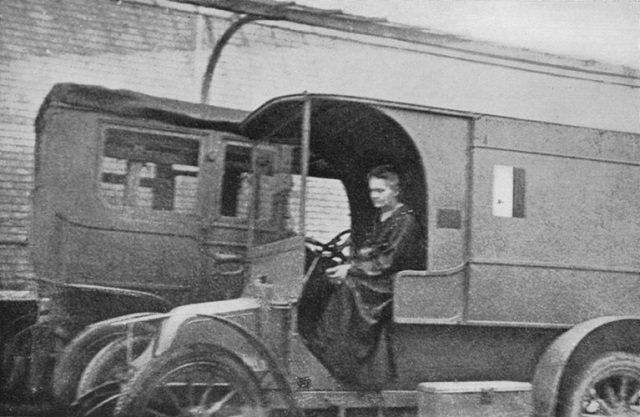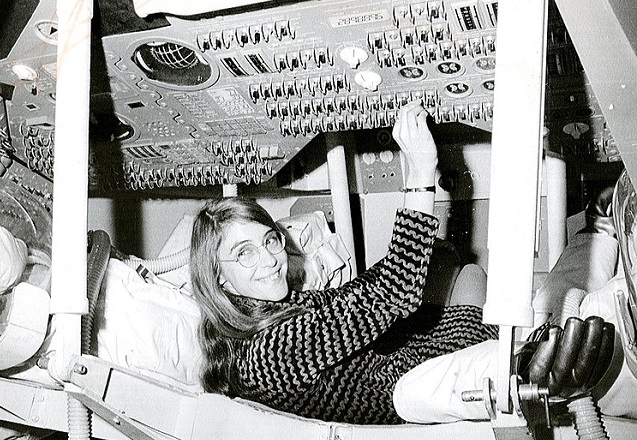Marie Sklodowska Curie was an exceptional physicist and chemist working during the 19th and 20th century. During her career she advanced the theory of radioactivity and discovered the chemical elements Polonium and Radium.
Her discoveries led to some of the greatest inventions of the 20th century, such as the development of radiotherapy as a treatment for cancer and the use of nuclear energy as a low-carbon source of electricity.
The Sisterhood
Marie and her Sister Worked to Pay for Each Other’s Education

Both Marie and her sister Bronya were unable to study at institutions of higher learning in Warsaw, as they did not admit women. Both sisters decided to study in France, where universities had admitted women since 1880.
Marie and Bronya both agreed to pay for each other’s education in France. Bronya went to medical school in Paris, while Marie took a governess position to help pay for her sister’s studies. Once Bronya had graduated, Marie went to Paris to join her and began studying physics, chemistry and maths at the University of Paris.
Both sisters pursued their education by helping the other. Marie Curie went on to become a double Nobel Prize winning scientist and Bronya went on to become a physician and the first director of the Maria Sklodowska-Curie Institute of Oncology.
The Little Curies – Designed, Paid for and Operated by Women

Designing the Little Curie
In 1914 Marie Curie halted her scientific research and focused her efforts on supporting France during World War I. She developed a mobile X-ray unit that could be used by medics on the battlefield and at field hospitals. The machine was known as the little curie and was a sort of radiological car. The vehicle contained an X-Ray machine that could be powered by the car’s engine.
Funding the Little Curies
Due to delays in receiving funding from the French military, Marie Curie approached the Union of Women of France, who agreed to fund the production of the first radiological car. As more cars were needed, Curie encouraged Parisian women to donate their vehicles to the cause, so that more little curies could be made available to treat soldiers in battle.
Operating the Little Curies
Without skilled operators the little curies were useless. Operators would need to be trained in anatomy, how to administer X-rays and in photographic processing. So Curie trained an army of women volunteers to operate the cars and the onboard X-ray equipment.
Curie trained a total of 150 women to operate the little curies, which could be driven onto the battlefield where they were needed. Military surgeons used the X-ray machines to guide them when operating on injured troops. It is estimated that the little curies saved 900,000 lives.
Nobel Prizes
The Nobel Prize in Physics 1903
Marie Curie won the Nobel Prize in Physics 1903, along with Pierre Curie and Antoine Henri Becquerel.
The Nobel Prize in Chemistry 1911
Marie Curie won the Nobel Prize in Chemistry 1911.
The Only Double Nobel Winner in the Sciences
Marie Curie was the first person to win two Nobel Prizes and remains the only person to have won Nobels in two different sciences (physics and chemistry).
Almost Overlooked

It is interesting to look back at the nominations for the Nobel Prize, which become public 50 years after the award is given. Pierre Curie, along side Henri Becquerel, received five nominations for the Nobel Prize in Physics in 1903. Marie Curie, on the other hand, received just one.
Zero Nominations
In fact, Marie Curie didn’t receive any nominations for the Nobel Prize in 1903. Member of the Nobel Prize Committee and advocate for women in science, Magnus Goesta Mittag-Leffler, compelled the committee to add Marie’s name to the nominations. Strings were pulled, and Charles Bouchard’s nomination of Marie Curie from 1902 was validated for 1903.
Thanks to Mittag-Leffler, Marie Curie went on to become the first woman to win a Nobel Prize in 1903, an important recognition for her revolutionary work on radioactivity.
Legacy
Marie Curie developed the theory of radioactivity, and techniques for isolating radioactive substances. She discovered two elements, polonium and radium. She directed the first studies into the use of radioactivity to treat disease and founded the Curie Institutes for medical research, in Paris and Warsaw. Her discoveries continued to have a huge impact on scientific development throughout the 20th century.
Radioactive
The film Radioactive was released in 2020 and tells the story of Marie Sklodowska Curie’s Scientific discoveries, her challenges and successes. The film also explores the unintended consequence of Curie’s discoveries such as the creation of the atomic bomb.
The Atomic Bomb
Marie Curie didn’t work on the Manhattan Project – the project that led to the development of the atomic bomb in 1945. Curie died before the Manhattan project began in 1939. But Curie’s work with radioactivity provided the foundations from which the atomic bomb could later be developed by scientists working on the Manhattan Project.
Radiotherapy
Marie Curie discovered the radioactive elements polonium and radium in 1898. It was quickly discovered that the radioactivity emitted from these elements could kill cells and could be used to treat diseases such as cancer. Radiation therapy became a popular treatment for diseases from the early 1900’s, based largely on the work of Marie Curie.
Radiotherapy has been advanced greatly over the last 100 years. About half of all cancer patients currently receive some type of radiotherapy during their treatment. Radiotherapy helps 1.5 million cancer patients every year.
Nuclear Power
Marie Curie’s discoveries paved the way to understanding the structure of the atom, which led to the development of nuclear power.
Nuclear power has very low greenhouse gas emission, the emissions that cause global warming. It doesn’t require fossil fuels and is relatively cheap to produce. Although, it generates a lot of radioactive waste, which takes hundreds of years to decompose, creating an ongoing challenge.
Books
Marie Curie – Little People, BIG DREAMS

Marie Curie – Little People, BIG DREAMS is a wonderful and inspiring book that would make a great gift for any budding young scientist.
The book introduces the legend that is Marie Curie and tells of her achievements as well as her struggles and challenges.
*Find it at Waterstones for £9.99
A version of the book called Marie Curie: My First Marie Curie – Little People, BIG DREAMS aimed at a younger audience is also available as a board book. *Find it at Waterstones for £5.99
BLOCK
I am Marie Curie

I am Marie Curie is a rather more in depth story for children, following the life of Marie Curie as she struggled on to pursue her ultimate goal of becoming an extraordinary scientist.
*Find it at Waterstones for £11.99
BLOCK
BLOCK
BLOCK
BLOCK
The Madame Curie Complex: The Hidden History of Women in Science

The Madame Curie Complex: The Hidden History of Women in Science is an enlightening examination of women’s contribution to science, from Marie Curie and Jane Goodall, to the women of the Manhattan Project.
The book explores how women often ask different questions, use different methods and come up with unique explanations for the phenomena they study.
*Find it at Waterstones for £15.99
BLOCK
BLOCK
BLOCK
BLOCK

What the * Means
Links marked with an * are affiliated links, which help run Riot Room and keep it free to use. If you use our links to buy something, we may get a small commission or other benefit to the site. If you do want to buy any of the items, please use our links so that the site benefits.
BLOCK

What the * Means
Links marked with an * are affiliated links, which help run Riot Room and keep it free to use. If you use our links to buy something, we may get a small commission or other benefit to the site. If you do want to buy any of the items, please use our links so that the site benefits.
Many Thanks.


